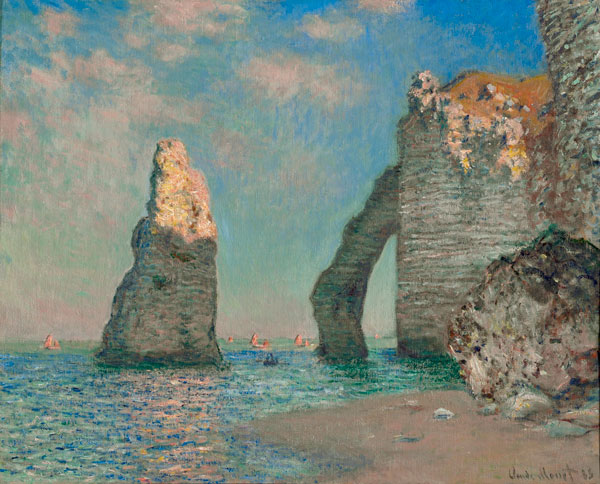The Seattle Art Museum will soon begin a new exhibition, “Monet at Étretat” (July 1–October 17, 2021), which explores Claude Monet’s paintings made at Étretat, a seaside village in Normandy, France. The exhibition is built around “Fishing Boats at Étretat” (1885), the only work by the artist in SAM’s collection. It is presented alongside ten other paintings by Monet from his visits to the village, along with five paintings by his contemporaries.
Organized by SAM, the exhibition is curated by Chiyo Ishikawa, SAM’s former Deputy Director for Art and Curator of European Painting and Sculpture. She retired in 2019 after a 30-year career at the museum.
The exhibition is especially worth viewing because it may be the last one curated at SAM by Dr. Ishikawa. The curator matters for two reasons. First, each viewer’s understanding of an exhibition rests on what the curator has written on wall placards about each artwork. These brief explanations point out the key features that the expert deems important that we observe.
Moreover, all careers have arcs and career writers like Ishikawa tend to produce their best work at the end of their careers. For unlike athletics, such as tennis, where the physical demands of the endeavor dictate that practitioners peak early, writers peak late. This is because mastery of any complex subject — like European painting—can easily take four decades. Furthermore, learning to command words on paper also evolves slowly over time.

The exhibition book of the same title, also written by Ishikawa, thus merits consideration for purchase (UW Press, 2021, 77 pages). It is her fifth senior-authored book (the first being “Leonardo Lives: The Codex Leicester and Leonardo Da Vinci’s Legacy of Art and Science,” 1998). Alternatively, the Seattle Public Library lists it as “on order.”
Ishikawa also narrates a virtual art talk on the new exhibition, “Monet at Étretat with Chiyo Ishikawa.” It is on YouTube at the SAM channel (June 2020, 24 min.).
As attendees of Ishikawa’s public lectures know, she has enriched the Seattle arts landscape in her time.
“Several brightly painted fishing boats sit empty at water’s edge. Masts lowered, no sails in sight, they are going nowhere. The only hint of action is beyond the shoreline —frothy waves crashing on the beach, a roiling sea, and whitecaps signaling rough waters all the way to the distant horizon. Though immobile, the vessels — angled toward the surf, their masts saluting in unison — promise to meet the ocean’s energy with a weight and force of their own.
“Claude Monet did not arrange the boats; they were already lined up on the beach… But he studied the group from different angles and strategically positioned himself above them, like a photographer framing a shot….”
Chiyo Ishikawa (2021).







